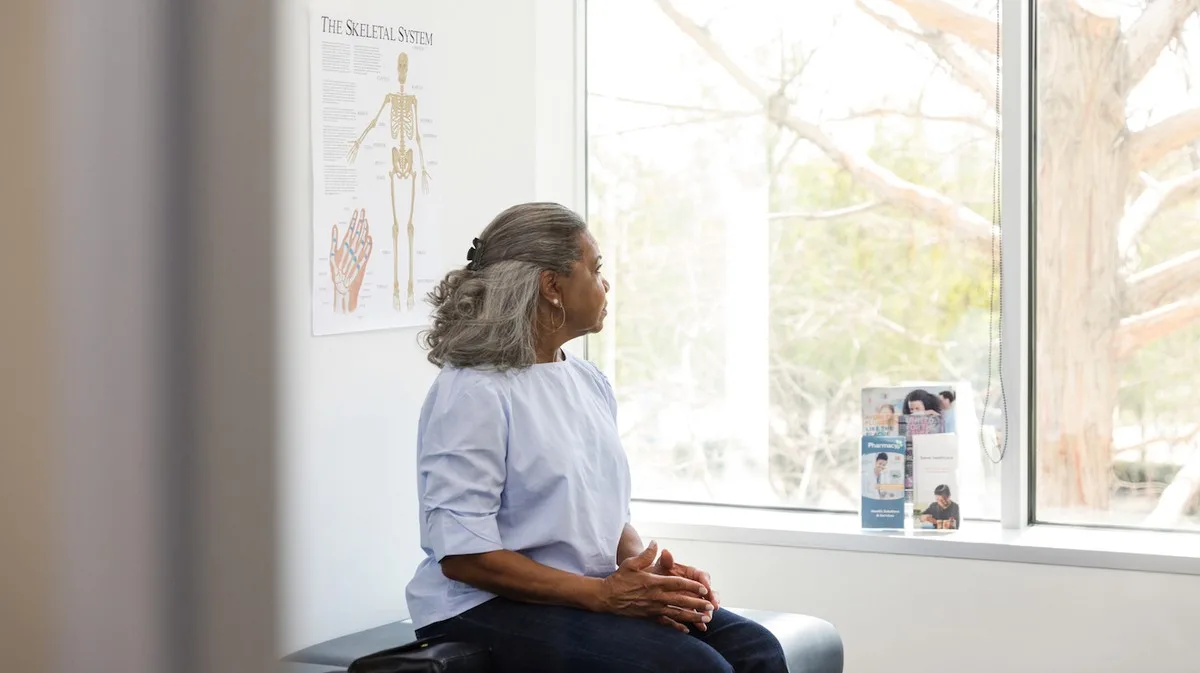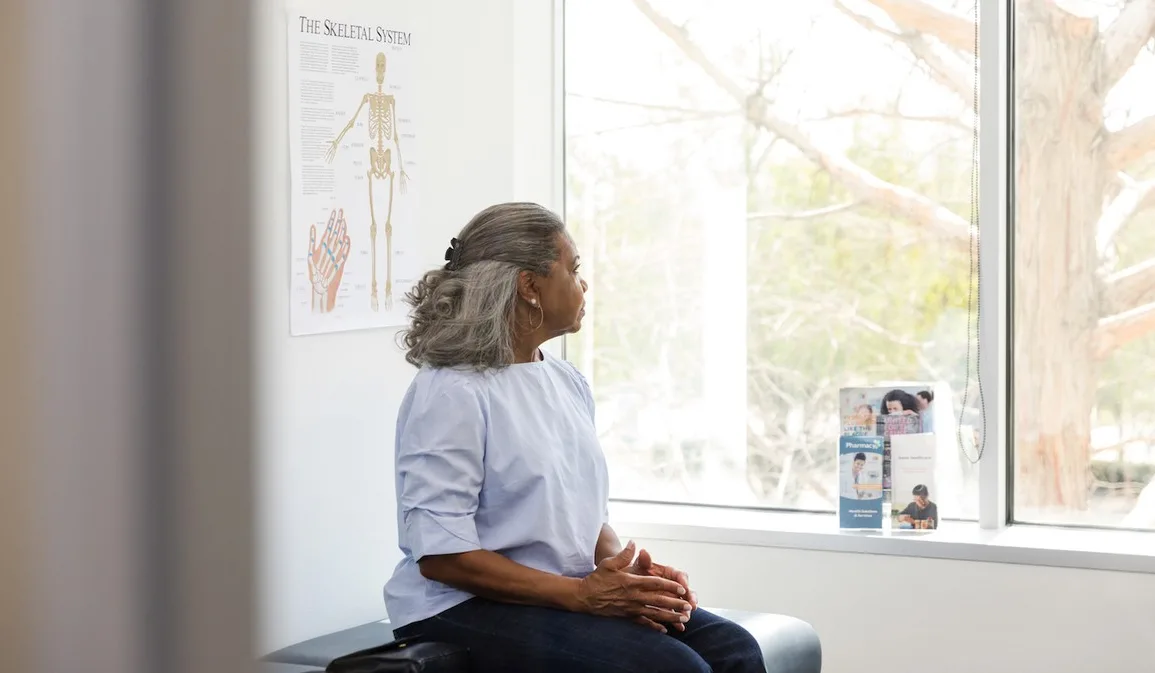
Esther Ross was diagnosed with AIDS in 1993, At the time, she was living in New York and had a multitude of physical symptoms and poorly-managed mental illness symptoms that contributed to her overall ill health.
She credits a determined social worker with helping her address her physical and mental health and for gaining the education she needed in order to help herself and others. She now lives in North Carolina and advocates for others who are HIV positive. Thanks to newer medications, Ross is now undetectable for the AIDS virus and the symptoms she experienced when she was diagnosed have vanished, but she has constant pain. She suffered through numerous doctor appointments where her pain was minimized or dismissed.
“They told me it was my age. They told me I was in pain because of stress. They told me it was because I was in menopause,” Ross says. Finally, the doctor who is her HIV provider helped her obtain the pain treatment she needs. “Thank God for my HIV provider. She is so thorough and she looks at all the labs.”
Ross, who is Black, is now an advocate for others who live with HIV/AIDS. In her advocacy work, she finds she has to push medical staff to address pain in her clients, most of whom are African American.
“They won’t send them to pain management unless I make a stink about it,” Ross says. “It’s sad.”
Ross’s experiences with her own medical care and the care of her clients highlight a dilemma for Black women experiencing pain. Research shows that Black people are less likely to be prescribed pain medication, or that doctors will prescribe inadequate pain relief, even for conditions that are commonly known to be quite painful, such as fractured bones and advanced cancers.
A recent piece of legislation, the Non-Opioids Prevent Addiction in the Nation (NOPAIN) Act, is designed to improve how pain is treated by widening financial incentives for doctors and hospitals to prescribe non-opioid pain relief. Yet the law, scheduled to go into effect in 2025, may not alter pain treatment for Black women, due to a history of medical racism and the under-treatment of pain.
Pain is a common yet complex part of life for HIV/AIDS patients, particularly women. The presence of pain is complicated because it can have several causes: It can be a symptom of HIV/AIDS, an indicator of an opportunistic infection, or a side effect of medication. Depending on the severity, this pain can be treated with non-steroidal anti-inflammatory drugs (NSAIDS). NSAIDS run the gamut of drugs like Tylenol and Motrin to stronger pain-killing drugs that are only available through prescription, such as Voltaren, used for arthritis pain. HIV/AIDS-related pain can also be treated with opioid narcotics like OxyContin.
Despite the effectiveness of opioid narcotics in treating moderate to severe pain, patients have found it increasingly difficult to obtain opioid narcotics for pain relief. This is due to increased awareness of opioid addiction and new Centers for Disease Control guidelines for prescribing opioids. According to the National Institute on Drug Abuse, the number of opioid-related deaths doubled between 2019 and 2021. In response to this increase, the new guidelines were intended to prevent doctors from over-prescribing opioids.
At the end of 2022, Congress attempted to address the rapidly increasing numbers of opioid addiction and opioid-related deaths. The NOPAIN Act, introduced by Sen. Shelley Moore Capito (R-WV), was approved by Congress in December 2022 as a part of a $1.7 trillion omnibus funding bill. The larger bill included several items that impacted Medicare and Medicaid payments for specific procedures, as well as defense spending and support for Ukraine. The NOPAIN Act was a bipartisan effort, with 24 Republican and 26 Democratic senators co-sponsoring the bill, but the vote on the omnibus funding was not. Twenty-nine senators voted against the spending bill, all of them Republicans.
But the things Ross has witnessed at her clients’ and her own doctor appointments are at the other end of the spectrum, with doctors being hesitant to prescribe any kind of pain medication. This hesitancy has historic roots. J. Marion Sims, who is credited with being the father of gynecology, performed experimental surgeries on enslaved Black women he had purchased. The women had vesicovaginal fistulas, an opening between the bladder and vagina caused by prolonged childbirth that causes urine to constantly leak. Sims performed these surgeries without any anesthetic, writing that he did not believe that the surgery was painful enough to warrant anesthetic—though he later used it when he performed the surgery on his white patients.
Hundreds of years later, Black people are still typically undertreated for pain. The undertreatment stems from a prevailing belief that Black people do not experience pain as acutely as members of other races. A 2016 study of 222 medical students and residents showed a majority believed that Black people felt less pain than others. Another study showed that when medical staff were asked to evaluate study participants for torn knee ligaments, Black study participants received lower pain ratings from the medical staff. For Black women specifically, 90 percent of Black women with chronic pain who participated in a treatment disparity research project reported that they had experienced gender-based discrimination in healthcare by experiencing verbal microaggressions by medical staff and having their pain dismissed.
Shawnita Sealy-Jefferson, a professor at Ohio State University who studies disparities in Black maternal health, says that the forced breeding of Black enslaved women also had a hand in this distorted view of how Black people experience pain. She recently participated in research that combined psychology, social epidemiology and other disciplines. The group of scholars concluded that racism could be a source of physical pain. The article points to the disproportionate numbers of Black people who experience pain syndromes and explains, “This inequity is due in part to the well-replicated finding that Black Americans are less likely to be screened for pain, referred for pain management, and adequately treated than White Americans.”
“There’s a hierarchy in human value,” Sealy-Jefferson says. “It drives the inequities in pain.”
She adds that the NOPAIN Act, while well-intended, may not change the disparities in the treatment of pain for Black women living with HIV/AIDS.
“The legislation was not intended for Black women,” says Sealy-Jefferson. “It’s pretty clear that the response to the opioid crisis is different because of the demographic.” Sealy-Jefferson points out that in Capito’s home state of West Virginia, 90 percent of people who die opioid-related deaths are white. To be sure, 90 percent of West Virginia residents are white, but a recent study of Black people who have experienced opioid addiction shows that, contrary to conventional wisdom, there is a substantial impact on Black urban communities. The difference lies in the source of opioids: Black people in this study were less likely to access opioids from doctor offices and more likely to access them through street drug use.
While reporting this article, this reporter had to undergo a surgical procedure. I researched the procedure and knew ahead of time that there would be a significant amount of pain after surgery. As a Black woman, I was prepared to experience undertreated pain, but was surprised that my doctor, who is also Black, prescribed an opioid medication for pain relief well in advance of the surgery. I was also given clear instructions on how to use the medication. Throughout the hospitalization and recovery, the pain I experienced was never minimized or ignored. I spoke of my surprise to a nurse practitioner in my doctor’s practice. She said that some hospitals, such as the one where my surgery took place, are adopting standards of care to avoid potential biases in pain treatment.
Despite slow-moving changes, Dázon Diallo, executive director of SisterLove, is well-aware of the pain legacy. Her international organization, based in Atlanta, serves Black women living with HIV/AIDS in the US and in Africa. Diallo formed the organization in 1989 after she noticed that Black women were being left out of the conversation, medical treatment, and political organization around HIV/AIDS.
She says that her organization supported the NOPAIN legislation, but did not do any organizing or legislative visits to advocate for it as the Atlanta-based organization was working at-capacity during an “election season.” Diallo added that addressing the disparities in the treatment of pain is a multi-layered issue.
“We need policy to enact fairness,” she says. “In addition, we need to revamp public health education because there is a denial of our lived experience. We also need social-cultural change to dismantle bias.”
Sealy-Jefferson acknowledges that the work in erasing pain treatment disparities is monumentous and can seem overwhelming. It is not for the faint of heart, she says.
“Everybody can’t do this,” she says. “But we’re going to bear witness. They’re going to have to listen to us.”



